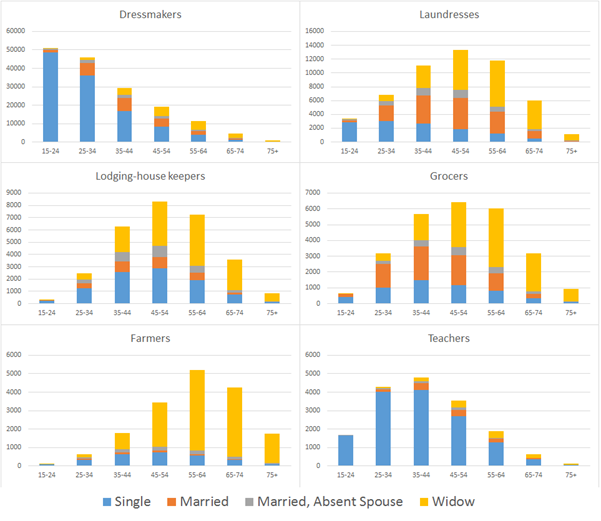Marital Status
Of the migrant business women identified in our study, a third were single and never married and another third were married and lived with their husbands. Amongst the remaining one third, majority of the women were widowed, and a smaller group were women who were married but with absent spouses. This meant that atleast a third of the women identified were head of their household and hence had a higher degree of indepedence in running and managing their businesses than their counterparts.
Marital Status of Migrant Business Women in 1911 Census
| Marital Status | Percentage | Head of household |
|---|---|---|
| Single (never married) | 33% | 1/3 head of household |
| Married (living with spouse) | 29% | Husband head of household |
| Married (absent spouse) | 15% | 75% head of household |
| Widowed | 22% | 90% head of household |
| Seperated/divorced/unknown | 1% |
It is often shown that many female entrepreneurs were single or widowed. It is important to note that neither marriage nor motherhood was an insurmountable obstacle to involvement in business, whether on their own or as a joint partner with their spouse or others. Indeed, sometimes the necessity of providing for a family may have induced entrepreneurial activity.
Married women in particular ran their business from the home. Married women with professional occupations such as teaching or the creative industries often had a husband who also ran a business. Whereas married dressmakers often had husbands who worked a waged job. For example, Annie Tarchinsky, was a Russian dressmaker in Tottenham Court Road – whose husband was an employed instrumental musician.
Marital Status by Trade Sector

Get in touch
Contact Gunjan.Sondhi@open.ac.uk
